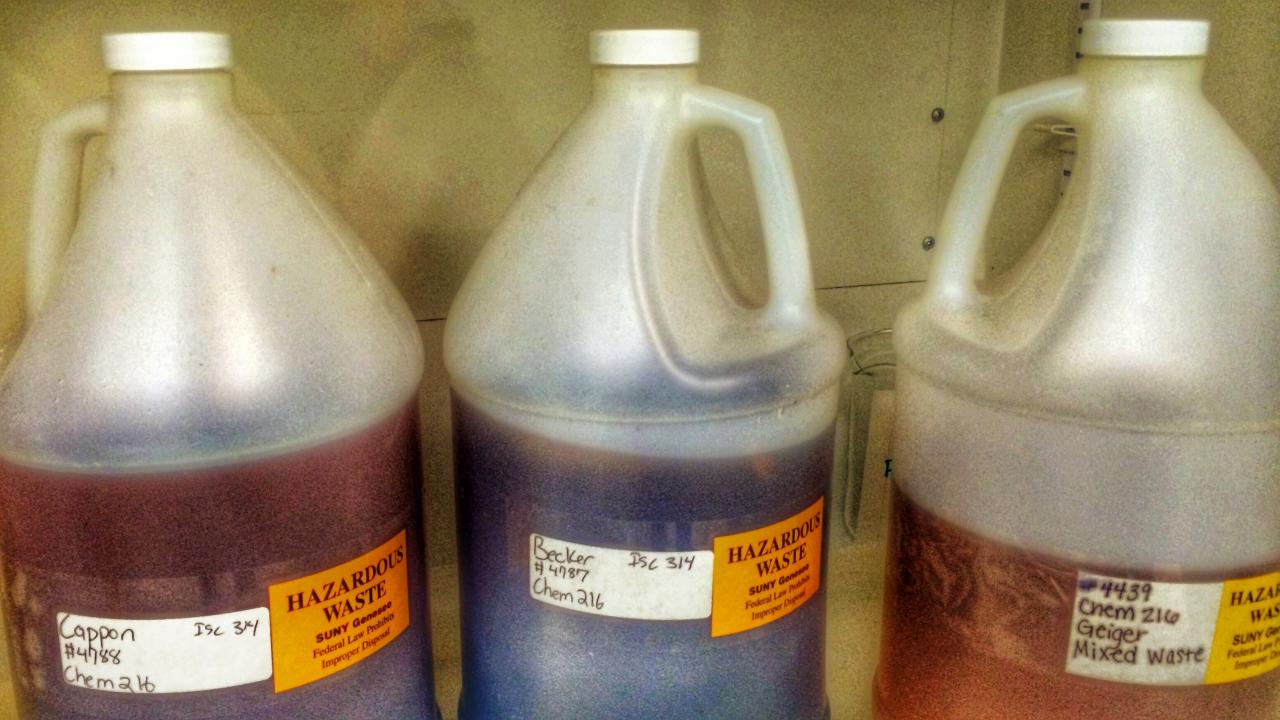Hazardous Waste
Hazardous Waste
|
The RCRA (Resource Conservation and Recovery Act) Hazardous Waste Program is a federal program implemented by the states. The New York State Department of Environmental Conservation has been granted authority by EPA to implement and enforce RCRA in New York State. EPA has, however, retained enforcement and oversight capabilities. RCRA is an extremely convoluted program that actually contains many waste management options. The goal of RCRA is to reduce the volume and toxicity of hazardous waste generated. Incentive to do so is created by a tiered system of regulation. Those entities that generate the largest volumes of hazardous wastes are subject to the highest levels of regulation. Entities that produce only small quantities of hazardous wastes have only a few regulations to comply with. Entities that produce large volumes of hazardous wastes are considered RCRA Large Quantity Generators (LQG). Smaller Quantity producers are considered Small Quantity Generators (SQG) and even smaller quantities belong in the category Conditionally Exempt Small Quantity Generator (CESQG). The regulatory requirements a generator must adhere to vary with generator status. SUNY Geneseo has been all three generator sizes over the last decade. Certain wastes are considered by EPA to be "acutely toxic". Generating or storing over 1 kg (approximately 1 quart) of these wastes in any calendar month places the campus in LQG status. Any campus department or researcher using any of the chemicals that the EPA considers acutely hazardous or a P-listed waste upon disposal are asked to contact EHS for a detailed waste classification. Dilution of these wastes is not permitted by regulation. The solution from rinsing containers is also subject to regulation and must also be collected. Containers of P-listed wastes should be disposed of as hazardous waste. Empty containers of non-P-listed waste may be rinsed (triple rinsed) and disposed of as regular trash. Other wastes categories, applicable to common campus wastes have been detailed in a spreadsheet. Examples of hazardous wastes generated by Laboratories have also been provided. Additional information on wastes that are considered Characteristically Toxic ( contain MEK, heavy metals including silver, carbon tetrachloride, pyridine, benzene, etc. have also been summarized. The federal regulations detail all RCRA waste categories. NYS also considers PCBs to be hazardous waste. Once a waste is generated, it must be placed in a container that is kept closed (except when filling) and labeled with a hazardous waste tag and sticker. The closed labeled containers must be stored in the room in which the waste was generated. The specific area in the room where waste is stored is called a RCRA Satellite Accumulation Area (SAA) and is subject to a specific set of requirements, including secondary containment and segregation by compatibility class. It is the responsibility of the generating department to ensure its personnel are aware of the regulations and prohibitions regarding the management of RCRA Hazardous Wastes. It is the responsibility of the generating professor, researcher or other campus individual to ensure the waste is properly classified and managed. EHS is available to answer any questions. |
Quick Links |
SUNY Geneseo Online Waste Management Program
SUNY Geneseo conveniently offers an online Hazardous Waste Management webform for submission of hazardous waste, individual unwanted chemicals, and used oil for campus personnel who have been adequately trained per RCRA.
Please contact EHS at fblasioli@geneseo.edu for more information about training.
Geneseo EHS reserves the right to require additional and/or more frequent training for personnel/students if conditions warrant.
Responsibilities of the Generator of Hazardous Waste
It is the user's responsibility to use the correct forms and enter appropriate data for chemical container submission to EHS for pickup. The "Generator of Hazardous Waste" is defined by the individual responsible for the management and documentation of hazardous waste, usually the research professor, the academic professor, or staff who supervises the laboratory facility in which hazardous waste is produced. Improperly completed and/or submitted containers will not be picked up by EHS.
For more information, refer to your training from EHS. Chemistry has also authored many helpful pages on this topic and you may review Chemistry SOPs found at the following pages:
Contacts
Frank Blasioli
Environmental Health and Safety Officer
121 Clark
Email: fblasioli@geneseo.edu
Phone: (585) 245-5812
Additional assistance may be found with:
Chemistry Stockroom
Daniel Jacques
Chemistry Stockroom and Safety Manager
Instructional Support Specialist, SL4
ISC 329
Email: jacques@geneseo.edu
Phone: (585) 245-5318
